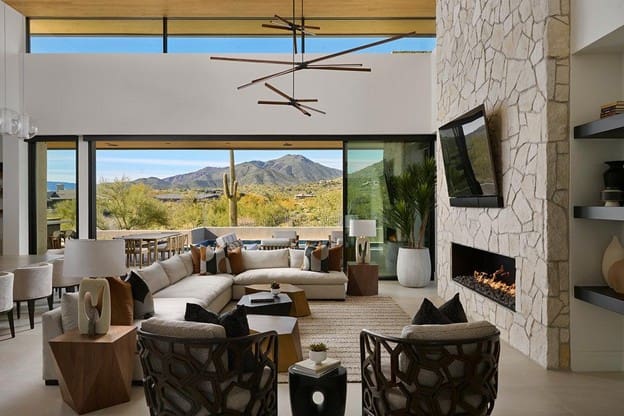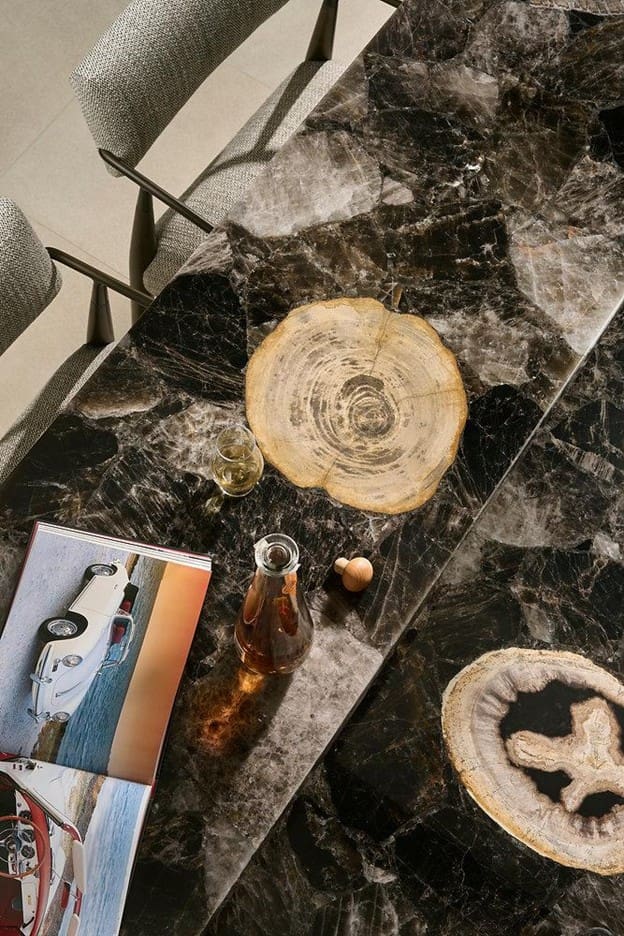In the vast expanse of the desert, where the sun casts its golden hues over endless stretches of sand and rock, lies a style of architecture that seems to emerge seamlessly from its surroundings. Desert modern design, with its clean lines, minimalist aesthetic, and emphasis on blending indoor and outdoor spaces, has become a symbol of harmony between human habitation and the natural environment.
Originating in the mid-20th century, desert modernism was a response to the unique challenges posed by desert living: scorching temperatures, relentless sunlight, and sparse vegetation. Architects sought to create structures that not only provided shelter but also celebrated the beauty of the desert landscape.

Exterior Desert Modern Design
One of the defining features of desert modern design is its seamless integration of indoor and outdoor spaces. Large windows, sliding glass doors, and expansive terraces dissolve the boundaries between the interior and exterior, allowing residents to feel connected to nature at all times. Whether it’s the silhouette of a distant mountain range or the gentle rustle of a desert breeze, the outdoor environment becomes an integral part of daily life.
But desert modern design is not just about blurring lines; it’s also about embracing contrasts. The stark simplicity of modernist architecture often serves as a striking counterpoint to the rugged beauty of the desert. Clean, geometric forms stand in juxtaposition to the organic shapes of cacti and rock formations, creating a visual dialogue that is both dynamic and captivating.
Materials play a crucial role in achieving this balance between modernity and nature. Architects often utilize local materials such as adobe, rammed earth, and stone, not only for their sustainability but also for their ability to blend harmoniously with the desert landscape. These earthy tones and textures help to anchor the building to its surroundings, making it feel like a natural extension of the land.

Desert Modern Design
In addition to its aesthetic appeal, desert modern design also offers practical advantages in terms of sustainability and energy efficiency. Passive solar design techniques, such as orientation, shading, and thermal mass, help to regulate interior temperatures and reduce the need for artificial heating and cooling. By harnessing the natural resources of the desert environment, these buildings minimize their ecological footprint while maximizing comfort and livability.
Moreover, desert modern design encourages a deeper connection to the land and a greater appreciation for the delicate balance of desert ecosystems. Residents are encouraged to cultivate native plants, conserve water, and minimize light pollution, fostering a sense of stewardship and respect for the environment.
As our world becomes increasingly urbanized and disconnected from nature, desert modern design serves as a powerful reminder of the importance of living in harmony with our surroundings. By embracing the principles of simplicity, sustainability, and integration, these architectural marvels offer a glimpse into a future where humanity and nature coexist in perfect balance. In the vast expanse of the desert, where the sun casts its golden hues over endless stretches of sand and rock, lies a style of architecture that seems to emerge seamlessly from its surroundings. Desert modern design, with its clean lines, minimalist aesthetic, and emphasis on blending indoor and outdoor spaces, has become a symbol of harmony between human habitation and the natural environment.
BEST THE EDIT
of
Santa Fe, NM — JSF Design, the nationally recognized interior design studio led by Principal Designer Jeffrey Florentine, received top honors at the 2024 Interior Design Society National Awards Gala in Santa Fe. The firm was awarded Best Home Under 3,000 Sq. Ft. for its project Bungalow, located in the heart of McCormick Ranch, Scottsdale, […]
Elevate Your Space
Let’s Bring Your Vision to Life
Design Goes Beyond Aesthetics...
It Shapes Experience.









+ Show / Hide Comments
Share to: